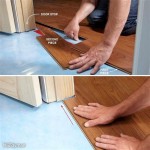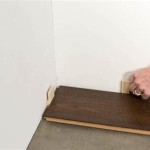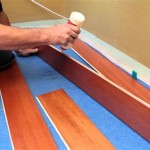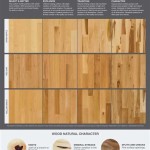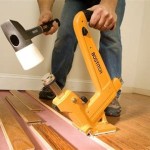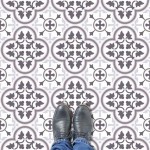Can You Whitewash Parquet Flooring? A Comprehensive Guide
Parquet flooring, known for its geometric patterns and timeless appeal, adds a touch of elegance to any space. However, changing tastes and evolving interior design trends may lead homeowners to seek ways to update this classic flooring. Whitewashing is a popular option for achieving a lighter, more contemporary look. This article explores the feasibility, process, and considerations involved in whitewashing parquet flooring, providing a detailed understanding of whether and how this transformation can be successfully achieved.
Whitewashing, in the context of wood flooring, refers to the application of a diluted paint or stain that allows the wood grain to remain visible. This technique differs from completely painting the floor, as it aims to create a translucent or semi-transparent effect. The resulting finish imparts a light, airy feel, often associated with Scandinavian or coastal design aesthetics. Whitewashing can brighten a room, conceal minor imperfections, and provide a fresh alternative to traditional wood finishes.
Understanding Parquet Flooring Construction and Materials
Before embarking on a whitewashing project, it's crucial to understand the specific characteristics of parquet flooring. Parquet flooring typically consists of small pieces of wood, often arranged in geometric patterns like herringbone, chevron, or basketweave. These pieces are usually glued or nailed to a subfloor. The type of wood used in the parquet flooring is a primary factor in determining the success of whitewashing. Common wood species include oak, maple, walnut, and cherry, each possessing distinct grain patterns and staining properties. Oak, with its open grain, tends to accept whitewash more readily than denser woods like maple. Identifying the wood species is a critical first step in planning the project.
The existing finish on the parquet flooring also plays a significant role. Many older parquet floors are coated with polyurethane or varnish. These finishes create a barrier that prevents the whitewash from penetrating the wood. Therefore, thorough preparation, including sanding, is essential to remove the existing finish and expose the bare wood. The age and condition of the flooring should also be assessed. If the parquet is severely damaged, warped, or uneven, repairs may be necessary before whitewashing to ensure a uniform and aesthetically pleasing final result.
The Process of Whitewashing Parquet Flooring: A Step-by-Step Guide
Whitewashing parquet flooring involves several key steps, each contributing to the overall success of the project. Careful planning and execution are essential to achieve the desired outcome.
1. Preparation and Safety: This stage involves gathering the necessary tools and materials. These include a floor sander (drum or orbital), sandpaper of varying grits (typically starting with a coarse grit like 36-40 for removing the existing finish and progressing to finer grits like 80-100 and then 120-150 for smoothing), a vacuum cleaner, tack cloths, whitewash stain or paint, paintbrushes or rollers, and protective gear (safety glasses, dust mask, and gloves). Ensuring adequate ventilation in the work area is crucial to minimize exposure to dust and fumes. Remove all furniture and cover any areas that are not being whitewashed with drop cloths or plastic sheeting.
2. Sanding the Floor: Sanding is a critical step to remove the existing finish and create a smooth, even surface for the whitewash to adhere to. Start with a coarse grit sandpaper to remove the bulk of the old finish. Work systematically, sanding in the direction of the wood grain. Progress to finer grits, gradually smoothing the surface. Pay particular attention to edges and corners, using an edge sander or hand sanding to ensure thorough removal of the finish. After each sanding pass, thoroughly vacuum the floor to remove dust and debris. Use tack cloths to wipe down the surface and eliminate any remaining fine particles.
3. Applying the Whitewash: Once the floor is sanded and cleaned, the whitewash can be applied. Test the whitewash on a small, inconspicuous area of the floor to ensure the desired color and opacity are achieved. A common technique involves diluting white paint (latex or oil-based) with water or a thinning agent. The ratio of paint to water will determine the translucency of the whitewash. A higher ratio of water will result in a more subtle, transparent finish. Apply the whitewash in thin, even coats using a paintbrush or roller. Work in the direction of the wood grain. After applying each coat, immediately wipe off any excess whitewash with a clean cloth. This prevents the whitewash from becoming too opaque and allows the wood grain to remain visible. Allow each coat to dry completely according to the manufacturer's instructions before applying additional coats, if desired. Multiple thin coats are preferable to a single thick coat, as they provide better control over the final color and prevent uneven application.
4. Sealing the Floor: After the whitewash has dried completely, apply a protective sealant. This step is essential to protect the whitewashed finish from wear and tear and to enhance its durability. Polyurethane and water-based sealants are common choices. Apply the sealant in thin, even coats, following the manufacturer's instructions. Allow each coat to dry completely before applying additional coats. Multiple coats of sealant are recommended for high-traffic areas. Lightly sand between coats of sealant with fine-grit sandpaper (220-grit or higher) to ensure a smooth, even finish. Vacuum and wipe down the floor with a tack cloth before applying each coat of sealant.
Key Considerations and Potential Challenges
Whitewashing parquet flooring presents several considerations and potential challenges that homeowners should be aware of before starting the project.
1. Wood Species and Grain: As mentioned earlier, the type of wood used in the parquet flooring significantly impacts the success of whitewashing. Woods with open grains, like oak, tend to accept whitewash more effectively than denser woods, like maple. The grain pattern will also influence the final appearance. Experimenting with different whitewash dilutions and application techniques on a test area is crucial to determine the best approach for the specific wood species and grain pattern.
2. Achieving Uniformity: One of the biggest challenges in whitewashing parquet flooring is achieving a uniform finish. Parquet flooring, with its small pieces and intricate patterns, can be difficult to sand and whitewash evenly. Variations in wood color, grain, and absorption can lead to uneven color distribution. Careful sanding, consistent application techniques, and multiple thin coats of whitewash can help minimize these variations. Using a high-quality whitewash and sealant can also contribute to a more uniform and durable finish.
3. Maintenance and Durability: Whitewashed floors, while aesthetically pleasing, may require more frequent maintenance than traditionally finished wood floors. The lighter color can show dirt and scratches more easily. Regular sweeping or vacuuming and occasional damp mopping are essential to keep the floor clean. Using floor mats at entryways and furniture pads under heavy objects can help protect the finish from wear and tear. Periodic reapplication of the sealant may be necessary to maintain the floor's appearance and durability. The choice of sealant also influences durability. Polyurethane sealants typically offer better abrasion resistance than water-based sealants. However, water-based sealants are generally considered to be more environmentally friendly and have lower VOC emissions.
4. Existing Adhesive: With older parquet floors, the adhesive used to install the wood pieces can sometimes leach to the surface during sanding, particularly if excessive heat is generated by the sanding process. This can create discolored spots or prevent the whitewash from adhering properly in certain areas. Applying a barrier coat or stain-blocking primer after sanding may be necessary to address this issue. Choosing a slower sanding speed and allowing the floor to cool down periodically can also help minimize adhesive leaching.
5. Reversibility: Whitewashing, while less permanent than completely painting the floor, still involves altering the original finish. Reversing the process to restore the floor to its original state can be challenging and may require extensive sanding and refinishing. Homeowners should carefully consider the long-term implications before embarking on a whitewashing project.
Alternatives to Whitewashing
While whitewashing is a popular option, alternative methods exist for achieving a lighter look on parquet flooring without the commitment or potential challenges associated with whitewashing.
1. Lightly Tinted Sealants: Using a clear sealant with a subtle white tint can provide a similar effect to whitewashing while offering greater control over the final color and minimizing the risk of uneven application. These tinted sealants are available in various shades and can be applied directly to the sanded floor. They offer good durability and require less maintenance than whitewashed floors.
2. Pickling Stain: Pickling stain is another option for creating a translucent white finish on wood. It is similar to whitewash but typically contains a higher concentration of pigment, resulting in a slightly more opaque finish. Pickling stain is often used on furniture and can be applied to parquet flooring after sanding and cleaning. It is important to wipe off the excess stain after application to allow the wood grain to remain visible.
3. Professional Refinishing: Hiring a professional flooring contractor to refinish the parquet flooring is a more expensive option but can provide superior results. Professionals have the expertise and equipment to properly sand, stain, and seal the floor, ensuring a uniform and durable finish. They can also advise on the best products and techniques for achieving the desired look, taking into account the specific characteristics of the parquet flooring.
4. Using Area Rugs and Light-Colored Décor: If the goal is simply to brighten the room, consider using light-colored area rugs and décor to create a lighter and more airy feel. This approach avoids altering the parquet flooring and allows for greater flexibility in changing the room's appearance in the future.
Ultimately, the decision of whether to whitewash parquet flooring depends on individual preferences, the characteristics of the flooring, and the desired aesthetic. Careful planning, proper preparation, and attention to detail are essential for a successful outcome. Considering the potential challenges and exploring alternative options can help homeowners make an informed decision and achieve their desired look while preserving the beauty and integrity of their parquet flooring.

Wood Floor Refinishing And Whitewashing The Honeycomb Home

Wood Floor Refinishing And Whitewashing The Honeycomb Home

Sanding And Whitewashing Wood Floors

The Easiest Way To Whitewash Your Wood Floors

Diy Whitewashed Wood Floors Renovation Semi Pros

How To Get The Perfect White Wash Effect On Your Wooden Floor Art Of Clean 01223 863632

Diy Whitewashed Wood Floors Renovation Semi Pros

Parquet Staining White Tone

Pin Page

How To Whitewash Wood In 3 Simple Ways A Piece Of Rainbow
Related Posts



